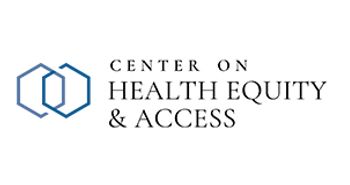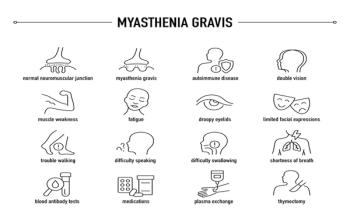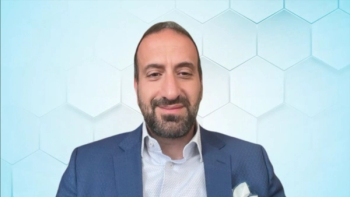
For this analysis, outcomes were compared between individuals who had pulmonary arterial hypertension (PAH) and healthy controls by using Fitbit-derived data over 12 weeks and then at a 1-year follow-up.

For this analysis, outcomes were compared between individuals who had pulmonary arterial hypertension (PAH) and healthy controls by using Fitbit-derived data over 12 weeks and then at a 1-year follow-up.

Long-term exposure to multiple air pollutants may silently wreak havoc on your gut, significantly increasing the risk of gastrointestinal diseases and underscoring the urgent need for public health policies that clean the air we breathe and protect our digestive health.

An analysis of an interdisciplinary care model for managing chronic kidney disease (CKD) shows hospital admissions dropped by 26% and emergency department (ED) visits decreased by 30% after clinic initiation.

Despite recent declines, health care worker burnout has not returned to prepandemic levels and remains a persistent concern across roles and settings.

Cardiovascular risk factors increase the risk of arterial and venous thrombosis in patients with myeloproliferative neoplasms, a study found.

This week, the Center on Health Equity & Access covered artificial intelligence, diabetes clinical trials, racial disparities in cancer antigen thresholds, and more.

In part 4 of an interview with The American Journal of Managed Care®, Frederick L. Locke, MD, provides insight on the design of the ALPHA and ALPHA2 trials, which are investigating the chimeric antigen receptor T-cell therapy (CAR T) cemacabtagene ansegedleucel (cema-cel) in relapsed/refractory large B-cell lymphoma.

Despite widespread concern following the Dobbs v Jackson Women’s Health Organization decision, researchers found no significant changes nationwide in obstetrician and gynecologist (OBGYN) practice locations.

The complete response letter (CRL) specifies that the current dosage duration of aflibercept is still safe but extending the duration is not approved.

Richard Hughes IV, JD, MPH, spoke about the upcoming oral arguments to be presented to the Supreme Court regarding the Braidwood case, which would determine how preventive services are guaranteed insurance coverage.

The risk of some skin cancers, including squamous cell carcinoma, basal cell carcinoma, and non-melanoma skin cancer, was particularly heightened among patients with severe mucous membrane pemphigoid.

Acalabrutnib plus venetoclax, with or without obinutuzumab, improved progression-free survival (PFS) compared with chemoimmunotherapy (CIT) in patients with untreated chronic lymphocytic leukemia (CLL), meeting the phase 3 AMPLIFY study’s primary endpoint.

Multidisciplinary coordination across prescribing teams, nursing, laboratory medicine, finance, and infusion centers is crucial for gene therapy delivery in Duchenne muscular dystrophy (DMD).

Initiating chronic kidney disease (CKD) screening at age 55 yielded substantial reductions in kidney failure incidence and improvements in life expectancy across all groups.

Health care disparities are often driven by where patients live, explained Antoine Keller, MD, as he discussed the complex, systematic hurdles that influence the health of rural communities.

The remote measurement tool enables Duchenne muscular dystrophy (DMD) assessments through analysis of caregiver-recorded videos.

Exercise is a powerful modulator of gut health in patients with gastrointestinal (GI) conditions, as moderate activity can ease gut inflammation, reduce colorectal cancer risk, and relieve constipation, while intense workouts may backfire, causing reflux, GI bleeding, or gut barrier disruption.

Marking the first approval in over a decade for this challenging condition, the FDA has approved dupilumab (Dupixent) to treat chronic spontaneous urticaria in patients 12 years and older whose hives and itching remain uncontrolled by antihistamines.

Pierluigi Porcu, MD, speaks to the considerations clinicians need to account for to balance cost, patient experience, and outcomes for those with chronic lymphocytic leukemia (CLL).

Research presented at the recent annual meeting of the Academy of Managed Care Pharmacy highlights outcomes among patients who have anti-acetylcholine receptor antibody-positive myasthenia gravis that include reduced exacerbations and need for immunoglobulin.

Previous work had suggested pausing Bruton tyrosine kinase (BTK) inhibitors before COVID-19 vaccination might boost immunity in patients with chronic lymphocytic leukemia (CLL).

Coverage of our peer-reviewed research and news reporting in the health care and mainstream press.

From Crohn disease to uncomplicated urinary tract infections and beyond, the FDA issued several high-impact drug approvals last month.

Elinzanetant significantly reduced the frequency and severity of vasomotor symptoms, known as hot flashes, compared with placebo across body mass index (BMI) and smoking status subgroups.

Intellectual disabilities, food allergies, and asthma were all more common in children who took multiple courses of antibiotics before the age of 2 years.

There has been a sharp increase in colorectal and pancreatic cancer rates among Americans under 55 years, despite declines in older adults, according to a new study.

Recent advances have marked a turning point for the treatment noncirrhotic metabolic dysfunction-associated steatohepatitis (MASH), with more therapies on the horizon to hopefully better address patients' cirrhosis, explained Naim Alkhouri, MD.

The draft would call for a major budget cut of $40 billion to HHS, among other proposals.

Recurrence-free survival rates were similar, even when patients quit adjuvant immunotherapy early, according to a new report.

Black and American Indian women with ovarian cancer were less likely to have elevated cancer antigen 125 (CA-125) levels at diagnosis, resulting in delayed chemotherapy initiation and highlighting the need for more inclusive guidelines.

259 Prospect Plains Rd, Bldg H
Cranbury, NJ 08512
© 2025 MJH Life Sciences®
All rights reserved.
